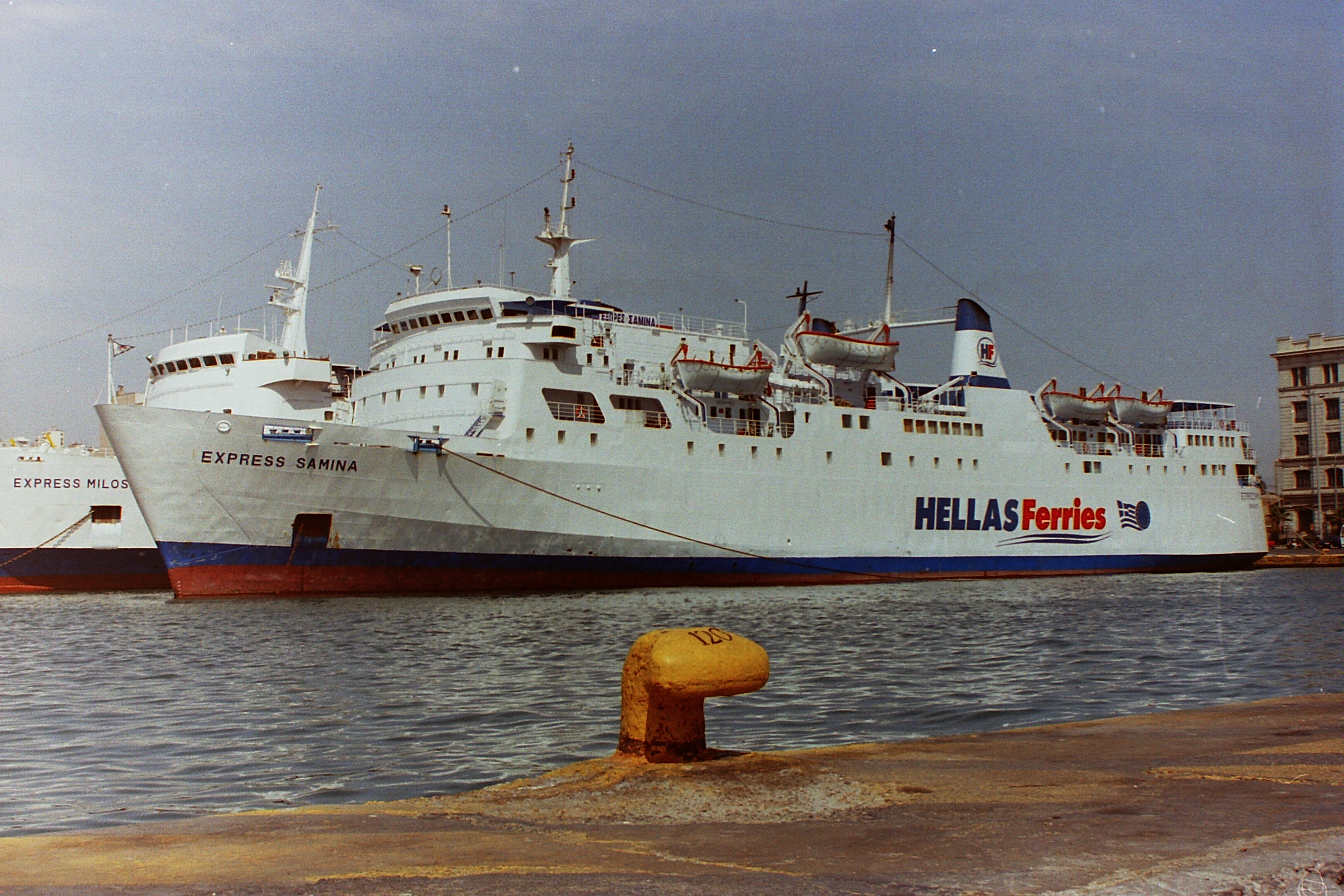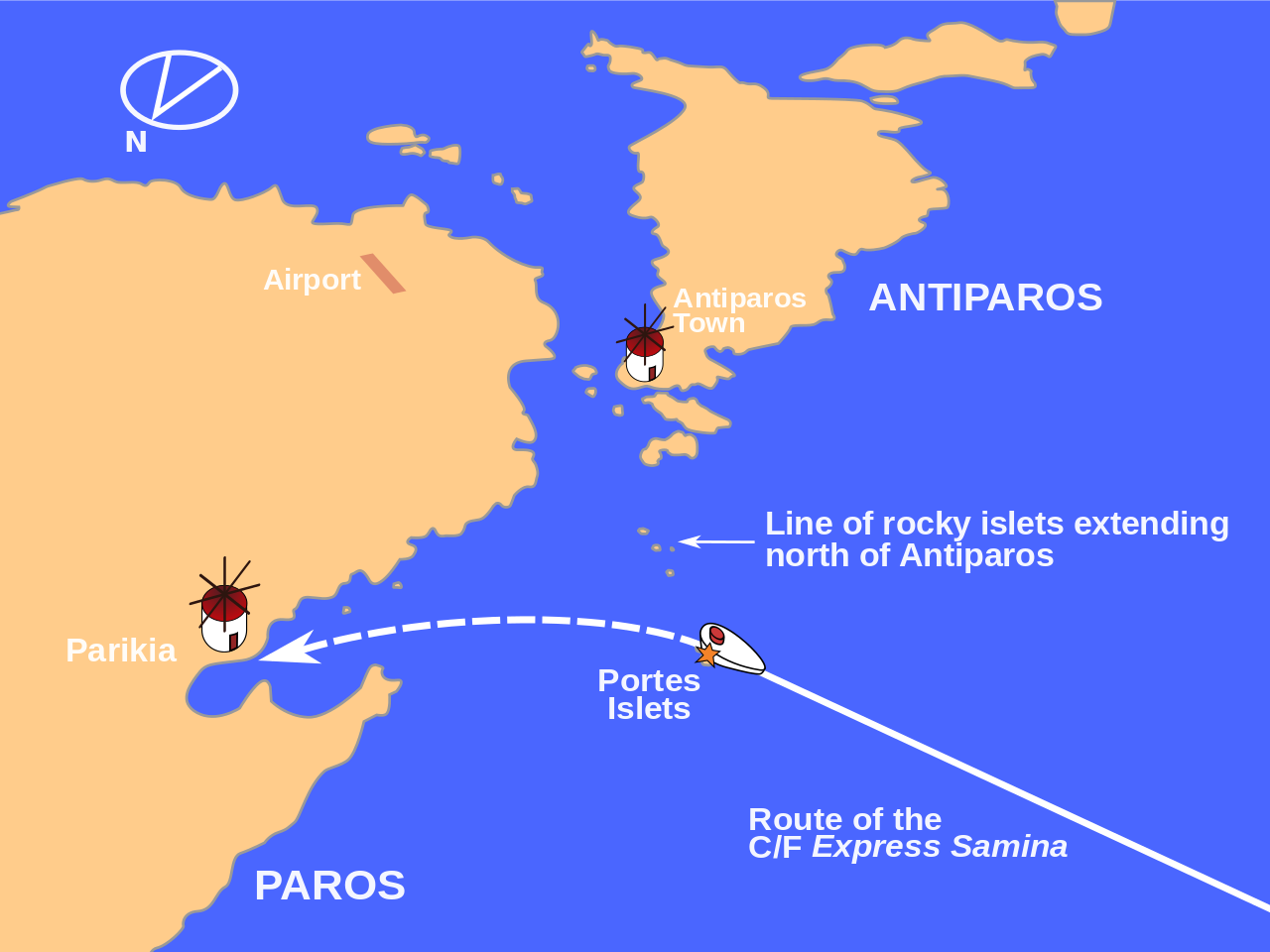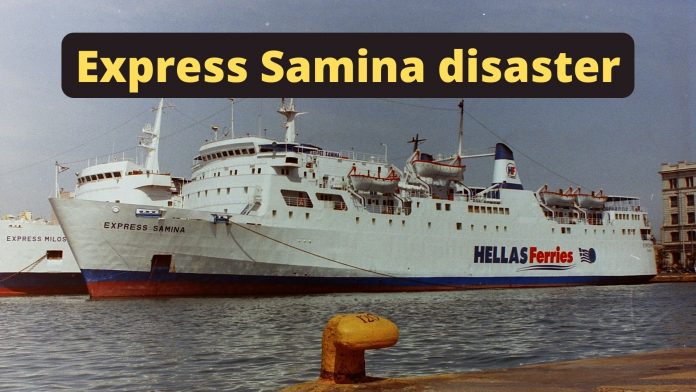On the evening of Tuesday 26 September 2000, MS Express Samina left the Port of Piraeus with 473 passengers and 61 crew members. At 22:12 local time, 2 nmi off the port of Parikia, at Paros island, the ship hit the reef of Portes islets at 18 knots.
The wind at the time was 8 Beaufort. The Paros islandclose to the islets at 23:02, resulting in the deaths of 82 people from a total of 533 on board.

The first responders to the distress call were fishing boats from the nearby port, followed by the port authorities and Royal Navy vessels, which were in the area carrying out a NATO exercise.
The fact that some of the crew did not help the passengers evacuate the sinking ferry contributed to the death toll.

The crew had placed the ship on autopilot and there were no crew members on Bridge watch. Even with autopilot on, standard practice calls for one crew member (officer) to be on the bridge.
The crew had deployed the fin stabilizers system to decrease the motions in bad weather; normally both stabilizer fins would deploy, but in this case the port stabilizer fin failed to extend, causing the ship to drift and therefore not travel in a straight line.
A crew member discovered the problem and tried to steer the ship to port, but this action occurred too late and at 22:12 local time, the ship struck the east face of the taller Portes pinnacle.
The rocks tore a six-meter long and one-meter wide hole above the water line. After the impact, the rocks bent the stabilizer fin backwards, and the fin cut through the side of the hull, below the waterline and next to the engine room.
The water from the three-meter gash destroyed the main generators and cut off electrical power. The water spread beyond the engine room, and the operators could not remotely shut the doors due to a lack of electrical power.
Professor David Molyneux, an expert in the performance of ships in harsh environments, said that the damage sustained by the MS Express Samina should not normally sink such a ship.
The ship sank because nine of its eleven watertight compartment doors were open even though safety laws require ship operators to close and lock the safety doors. Molyneux described the open watertight doors as the most significant aspect of the sinking.
This conclusion was supported by the “Investigation Into The Sinking Of The RO-RO Passenger Ferry Express Samina” by the National Technical University of Athens-Ship Design Laboratory submitted during the 8th International Conference on the Stability of Ships and Ocean Vehicles.
Investigation:
After a 12-month investigation, the appointed experts submitted their report to the authorities. Specifically:
- The handling of the bridge watch crew even a few minutes before the impact was insufficient to avoid collision. Approximately 15 minutes before impact, the ship, in the absence of safe navigation rules, combined with the adverse weather conditions that prevailed, and out of its proper course, sailed on autopilot under the responsibility of the bridge watch crew, and the precise location was not known to the chief mate.
- It was the responsibility of the master and captain to ensure that the watertight doors were hermetically sealed; which in breach of the safety certificate, were all open.
- After the crash, the engine room officers did not promptly notify the captain of the fault, failing to close three out of the 11 watertight doors, resulting in the rapid inflow of water inside the vessel . The master’s notification delay was 8-10 minutes.
- The emergency siren for the abandonment of the ship and relevant information from the ship’s loudspeakers were not used under the responsibility of the master, and there was no guidance from crew to organize the evacuation of the ship.
- Many life buoys were not equipped with signposts and did not have whistles.
- Shortly after impact the ship sank in the dark, as the emergency generator had ceased to work within a few minutes after the crash.
- Failure to transmit the position of the shipwreck, resulting in the difficulty of search and rescue operations under the responsibility of the master and the ship’s radio operator.

Source : Maritime Cyprus













